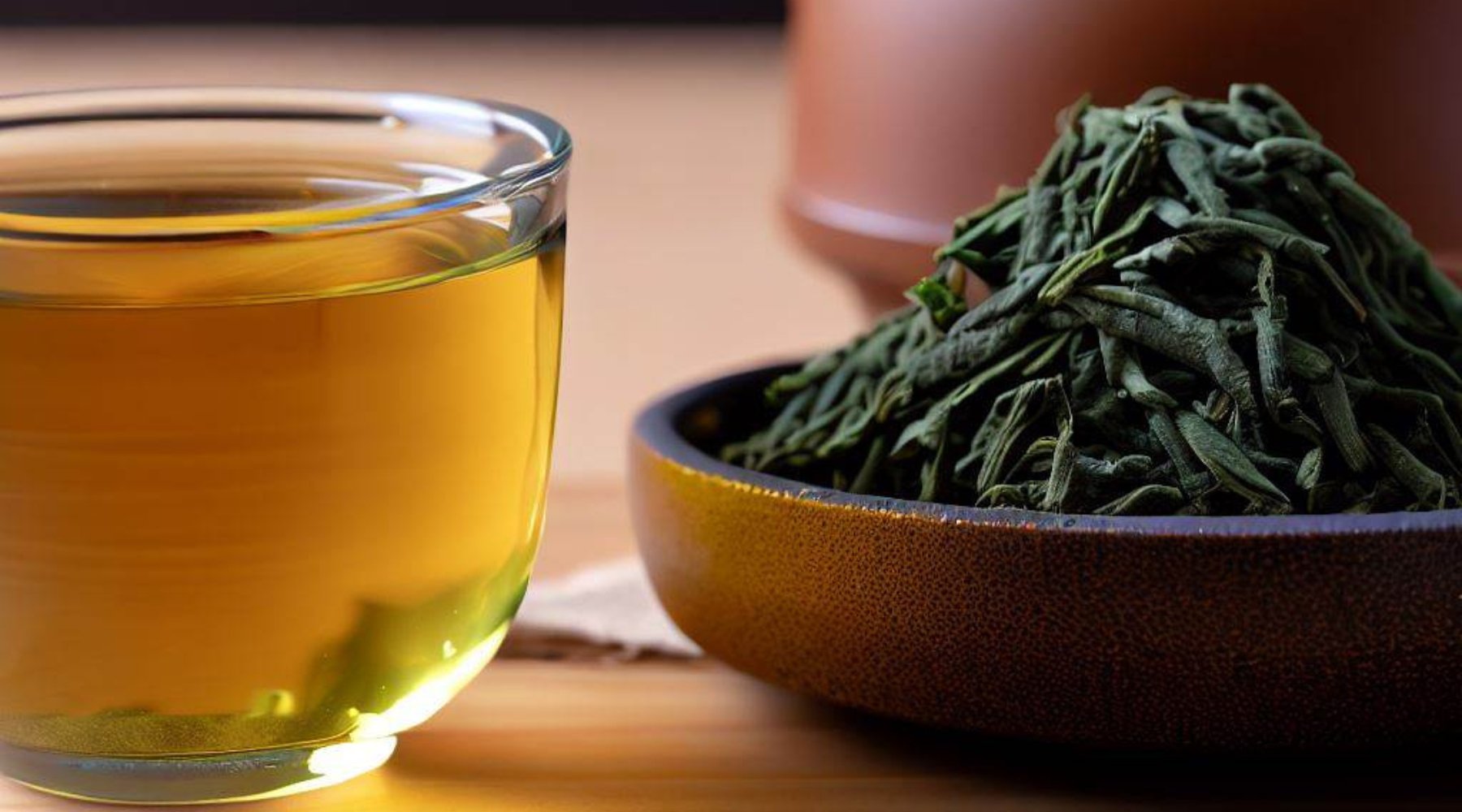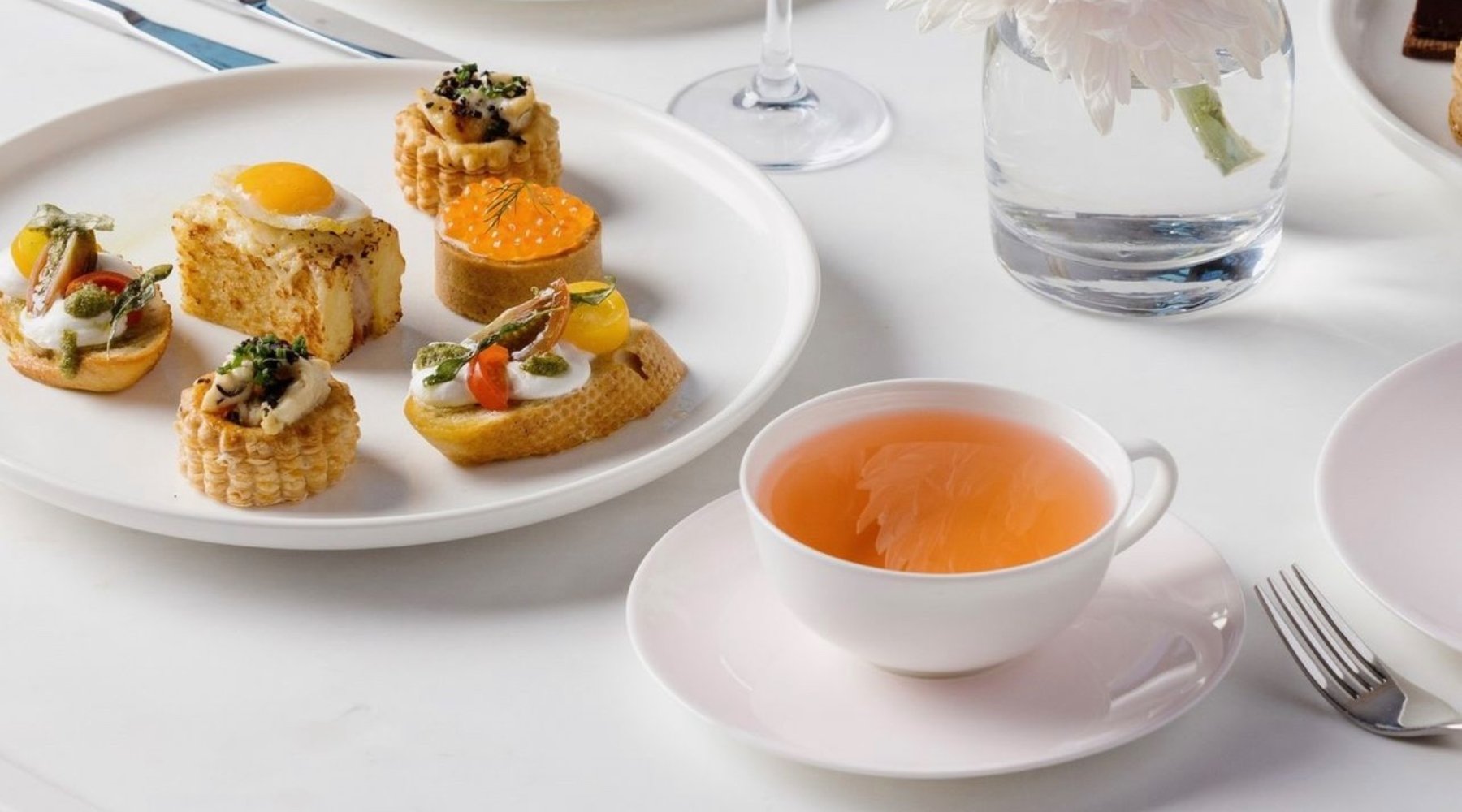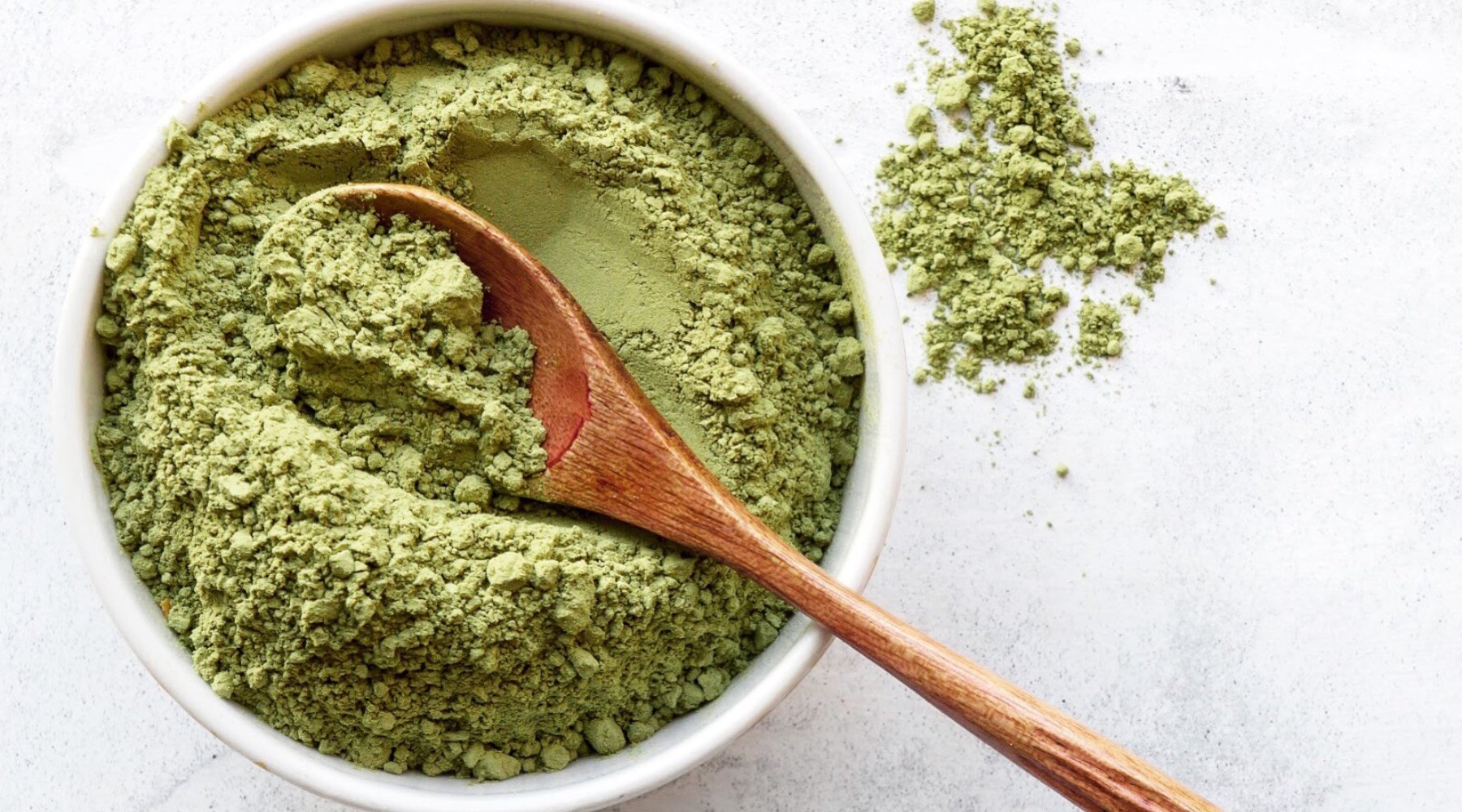
The Ultimate Guide to Gyokuro Tea
In the realm of teas, Gyokuro stands as a radiant gem, often hailed as the king of Japanese green tea. And for really good reasons! Its name, translating to "jade dew," offers a glimpse into the exquisite experience that awaits. From its rich history to the meticulous artistry of its crafting, Gyokuro offers a world of taste, caffeine nuances, and potential health benefits.
Recommended: Try Tavalon's Premium, Limited-Collection Gyokuro.
What Is Gyokuro?

As one of Japan's finest teas, Gyokuro is a shade-grown green tea. The distinct cultivation method sets it apart – the tea bushes are shaded for several weeks before harvest, intensifying the flavour and elevating its qualities. This dedication to cultivation gives birth to an elixir that tantalises the senses and nurtures well-being.
History of Gyokuro Tea
The vibrant history of Gyokuro tea unfolds in 1835, during the Edo period. Yamamoto Kahei (the sixth), a renowned tea merchant from Nihonbashi, Edo (now Tokyo), embarked on a transformative journey of discovery. His travels led him to Kyoto's Kinoshita family. Over there, a serendipitous encounter with shaded tea leaves covered in straw piqued his curiosity.
Inspired by the unusual stickiness of the leaves, Kahei shaped them into pellets, unveiling a newfound depth of flavour. Brimming with enthusiasm, he introduced this novel creation as "Tamano Tsuyu" (Jewel of Dew) upon his return to Edo, capturing the hearts of tea lovers.
Despite Kahei's efforts, replicating the process proved elusive. It was Eguchi Shigejuro, a perceptive resident of Uji, who recognised the key element – the protective leaf-covering technique. Shigejuro mastered the art and birthed Gyokuro in its true form.
This legacy of innovation was further refined in the Meiji Era by Tsujiri Emon, renowned for his ingenuity in developing Chabako (tea boxes) and elevating Uji tea to a national treasure through enhanced trade networks.
How Gyokuro Is Made
Crafting Gyokuro is a careful process of time-honoured techniques and involves the following steps:
Shading for Richness: Tea bushes of Camellia sinensis are shaded for about three weeks (20 days) before harvesting. This step encourages the growth of chlorophyll and amino acids, infusing the leaves with vibrant colour and savoury umami.
Selective Harvesting: Hand-picking ensures only the finest, tender leaves are chosen, enhancing Gyokuro's quality.
Steaming and Withering: The leaves undergo a precise steaming process to halt oxidation. Subsequently, they go through gentle withering to reduce moisture content, intensifying flavour and aroma.
Skillful Shaping: Masterful hands roll and shape the leaves into Gyokuro's characteristic needle-like form. This step requires precision to retain the tea's distinct appearance.
Final Firing: Controlled firing stabilises the leaves and stops enzymatic activity. This keeps Gyokuro's unique character and flavour.
The culmination of these steps results in Gyokuro's refined taste: a symphony of savoury, vegetal notes and a smooth, vibrant finish.
Gyokuro vs Sencha
As two popular members of the green tea family, Gyokuro and Sencha stand apart with distinct characteristics that cater to varied palates.
Gyokuro: This shade-grown tea boasts a unique cultivation process. Tea bushes go through careful shading, promoting the growth of tender leaves rich in umami and vibrant green hues. The result is a tea that encapsulates a deep, savoury flavour with subtle sweetness, making it a choice for those seeking a refined and nuanced taste. The shaded growth also contributes to Gyokuro's increased caffeine content and a milder astringency.
Sencha: On the other hand, Sencha showcases the unobstructed influence of sunlight. It's made from the top leaves of the tea bush, offering a grassy, slightly astringent taste. The leaves are steamed, preserving their bright green colour and fresh aroma. Sencha's flavour profile is a delightful interplay of vegetal notes and a refreshing briskness, making it an everyday favourite for those who relish a vibrant and invigorating tea experience.
What Does Gyokuro Taste Like?
Gyokuro presents a taste experience that's both distinct and refined. With its shade-grown cultivation, the tea develops a unique character characterised by a deep umami; it's often like the richness of seaweed or even a hint of buttery sweetness.
This savoury foundation is complemented by subtle vegetal notes, creating a harmonious balance. The overall impression is a smooth, full-bodied cup with a lingering, satisfying finish. If you're a connoisseur of nuanced flavours, Gyokuro's taste journey is one you won't want to miss.
How to Brew Gyokuro
Brewing Gyokuro is an art that requires attention to detail and a gentle touch. Follow these steps to savour its nuanced flavours:
Quality Water: Begin with fresh, clean water brought to around 60°C. This temperature ensures the delicate leaves unfold their taste profiles – sweet and umami – without bitterness.
Leaf Measurement: Measure about 2 teaspoons (around 4 grams) of Gyokuro leaves per 180 ml of water. Adjust the amount according to your taste preference.
Teapot Selection: Opt for a teapot with a fine mesh infuser to allow the leaves space to unfurl and steep properly.
Check out Tavalon’s Gravity Teapot for a hassle-free brewing experience to bring out the optimal flavours.
First Infusion: Pour a small amount of hot water onto the leaves to awaken them. Then, pour in the remaining water and steep for about 1-2 minutes. This initial infusion will yield a concentrated brew.
Multiple Steeps: Gyokuro is perfect for multiple infusions – 3-4 times. Gradually increase steeping time for subsequent brews, extracting different layers of flavour with each infusion. However, don’t exceed 20 seconds for next infusions.
Enjoy Unadorned: To truly appreciate Gyokuro's complexity, enjoy it plain without any additions. Sip slowly and savour its rich, umami-laden taste.
Brewing with a Higher Leaf to Water Ratio
Taking your Gyokuro brewing to an advanced level involves a technique practised by tea masters in Japan. While the standard ratio of 4-5 grams of leaves to 150-180 millilitres of water works well, an intriguing option is to amplify the experience. Increase the leaf-to-water ratio to 5 grams of leaves and 50 millilitres of water.
This unconventional approach yields a small yet potent batch of concentrated tea. Delve into not just the taste, but also the unique texture. With minimal water, Gyokuro gains a luxurious thickness, akin to oil.
Presented in petite cups, this method encourages mindful sips, inviting you to relish the sensation as the tea caresses your palate. Embrace this nuanced journey to truly uncover Gyokuro's depth.
Cold Brewing Gyokuro Tea
Cold brewing offers a refreshing and unique way to enjoy Gyokuro's flavours. Although the standard brewing of this expensive green tea involves water temperature of no higher than 60°C, you can still steep in much lower temperatures and cold brewed.
Leaf Measurement: Place around 2 teaspoons (around 4-5 grams) of Gyokuro leaves in a jar or pitcher per 150-180 ml of cold, filtered water.
Chill and Steep: Then, seal the container and refrigerate for 6-8 hours, or overnight. The longer steeping time extracts the tea's essence slowly, resulting in a smoother, milder taste.
Serve and Sip: Once steeped, strain the leaves and pour the cold-brewed Gyokuro into a glass with ice. Sip and relish the tea's refreshing and subtly sweet notes, a delightful departure from the hot brew.
Caffeine Levels in Gyokuro Tea
Gyokuro green tea stands out for its substantial caffeine content, packing around 120-140 milligrams per cup. Surprisingly, this is even more caffeine than a small cup of coffee. The reason behind this high caffeine level lies in gyokuro's shading process.
Before harvesting, tea bushes are shielded from direct sunlight for a few weeks. This unique practice prompts the leaves to accumulate more caffeine as they grow. As a result, gyokuro becomes a potent source of natural energy, providing a revitalising kick similar to coffee, making it an excellent choice for those seeking an invigorating start to their day.
Health Benefits of Gyokuro
Gyokuro tea not only delights the senses with its exquite flavour but also offers a range of potential health benefits. Here's a closer look at how this vibrant green tea can contribute to your well-being:
1. Rich in Antioxidants
Gyokuro is rich in potent antioxidants, notably catechins and polyphenols. These defenders work to counteract harmful free radicals, potentially supporting overall health and reducing the risk of chronic diseases. That's why this green tea proves to be an amazing detox tea, ridding your body of harmful chemical toxins.
2. Boosting Metabolism and Fat Burning
The dynamic blend of caffeine and catechins in gyokuro has been associated with an increase in metabolism, potentially aiding weight management goals. When combined with regular exercise and balanced diet, drinking gyokuro can accelerate fat burning and muscle building.
3. Supporting Heart Health
Catechin, a bioflavonoid present in gyokuro and other green tea types, may have a positive impact on cardiovascular health, preventing blood clots, heart attack, and other cardiovascular diseases. So, regular consumption of unsweetened gyokoru tea may help maintain healthy blood pressure levels and contribute to optimal heart function.
4. Improving Mental Altertness, Focus and Brain Wellness
Gyokuro boasts a higher level of caffeine content compared to other types of green tea. This is because only the highest quality tea leaves from the top of the plant are used. When coupled with the soothing amino acid L-theanine, the tea may offer a balanced boost in cognitive alertness, promoting focus and mental clarity. In fact, thanks to the presence of theanine, the caffeine content in gyokuro is gradually released throughout the day, which is why it is a healthier stimulant than caffeine in coffee.
5. Promoting Dental and Oral Well-Being
Some research suggests that the fluoride content, as well as minerals such as magnesium and potassium, in gyokuro tea could contribute to dental and oral health by promoting stronger teeth and helping to prevent cavities, bad breath, and other infections in the mouth.
6. Moderating Blood Sugar
Emerging studies propose that gyokuro's polyphenols might play a role in stabilising blood sugar levels, thus potentially aiding in blood sugar control.
It's crucial to acknowledge that while gyokuro presents an array of potential benefits, individual responses may vary. Incorporating it into a well-rounded lifestyle can contribute positively to your overall well-being. As with any dietary change, consulting with a healthcare professional is important to ensure its suitability for your individual health profile.
As we conclude our exploration of gyokuro tea, it becomes evident that this beverage offers more than just a flavourful sip. With its unique cultivation, intricate processing, and potential health benefits, gyokuro stands as a remarkable addition to the world of green tea. Its robust caffeine content, nuanced taste, and potential contributions to well-being make it a tea worth savouring.
From its origins to its potential impact on your health, gyokuro encapsulates a journey of taste and potential benefits. So, as you enjoy each cup, you're not only indulging in a delicious beverage but also nurturing your body with the essence of gyokuro's uniqueness.




Leave a comment
This site is protected by hCaptcha and the hCaptcha Privacy Policy and Terms of Service apply.